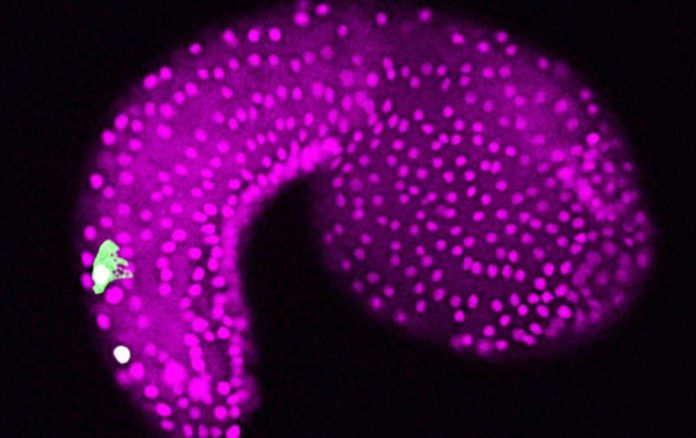Having a head is a great asset. Although this may appear trivial, evolution had to put it to the test over a long period of time: Invertebrates initially dominated the oceans while animal life arose.
Although these previously had head structures, vertebrates’ success was due to the evolution of a new, improved head.
This ‘new head’ allows for a far wider spatial distribution and multiplication of sensory cells, resulting in much improved environmental perception. This was also necessary for the emergence of a predatory mindset.
Cranial Sensory Ganglia serve a vital part in the transmission of environmental sensations to the vertebrate brain. These are nerve nodes that receive information from the sensory organs and are scattered throughout the head. Scientists had no idea how these ganglia were produced until today.
A study published in the journal “Nature” has recently revealed answers.
Ute Rothbächer’s research group at the University of Innsbruck’s Institute of Zoology was heavily involved in the study, which was a multi-institutional international partnership. Their findings reveal that vertebrates’ Cranial Sensory Ganglia are formed by a genetic pathway similar to that of their closest living cousins, tunicates. Certain sensory neurons called Bipolar Tail Neurons are found in the tail area of tunicate larvae. These are responsible for the animal’s locomotion as well as processing external cues. The gene Hmx is responsible for the formation of the relevant structures in both animal subphyla.
“Tunicates are like an evolutionary prototype for vertebrates,” explains Rothbächer. “There is a large anatomical gap between the adults of these subphyla, as they are adapted to ecological niches. This complicates research on their evolution. Common structures and mechanisms can only be identified at the embryonic stage – our common ancestor was probably very similar to a tunicate larva.”
The lamprey, a primitive fish that looks like an eel and is commonly referred to as a “living fossil,” and the tunicate Ciona intestinalis, which is enveloped by a yellowish, tubular mantle that protects the animal and filters food, were used as model organisms in the study.
Alessandro Pennati, a doctorate student in Rothbächer’s lab, investigated the function of the gene Hmx in Ciona. He used the CRISPR-Cas9 gene editing technology to selectively wipe out genomic sequences, while transient transgenesis was used to over-express genes.
In tunicates, Hmx regulates the development of Bipolar Tail Neurons, but in vertebrates, it regulates the development of Cranial Sensory Ganglia. Lamprey Hmx gene segments put into Ciona DNA were surprising active, just like Ciona’s own Hmx.
“Hmx has been shown to be a central gene that has been conserved across evolution. It has retained its original function and structure and was probably found in this form in the common ancestor of vertebrates and tunicates,” adds Pennati.
Hmx was likely critical in the creation of highly specialized head sensory organs in vertebrates, as cranial sensory ganglia and bipolar tail neurons have the same evolutionary background.
Image Credit: ALESSANDRO PENNATI
You were reading: Researchers Have Identified Important Genetic Origin of Our Senses
